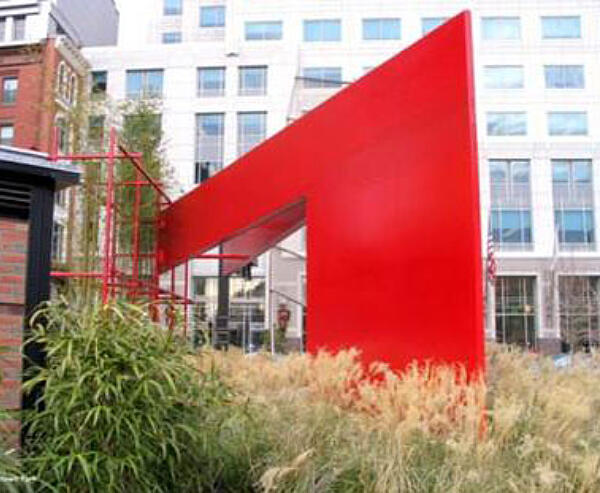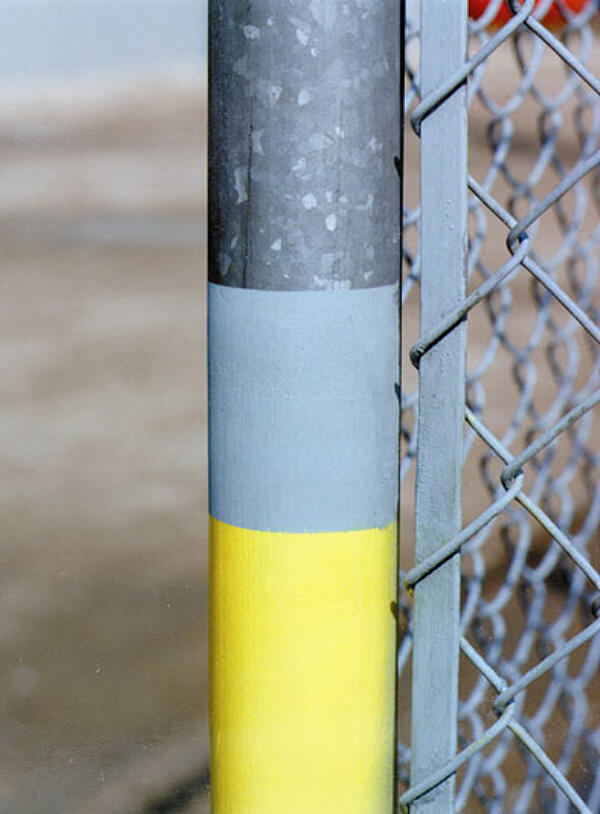Synergistic Effect

As previously stated, duplex systems are often specified for aesthetic reasons. However, the synergy between the two coatings provides a much more practical benefit - extended protection. Used independently, both paint/powder coatings and galvanizing provide corrosion protection for steel, however, when utilized together in a duplex system a more sophisticated corrosion resistance is achieved, known as the synergistic effect.
The exterior layer of paint or powder coating slows down the rate at which the zinc is consumed, greatly extending the life of the galvanized steel. In return, once the exterior layer has been weathered down or damaged, the zinc beneath is still available to provide cathodic and barrier protection. Furthermore, the hot-dip galvanizing "primer" ensures no underfilm corrosion will form as the paint/powder coating begins to deteriorate.
As a result, the substrate steel is afforded corrosion protection for 1.5 to 2.3 times the sum of the expected life of each system alone. For example, if a galvanized coating alone on black steel would provide 50 years of maintenance-free protection and a paint coating would not require any maintenance for 10 years, the combination duplex system would provide maintenance-free protection for 90 to 138 years in the same environment. A periodic maintenance schedule can extend this synergistic lifetime even longer.
In mathematical form, the synergistic effect would be defined:
Mduplex = Duplex Multiplier x (Mgalvanizing + Mpaint)
M = time to first maintenance
This equation assumes no maintenance will be performed on the paint or powder coating, and as it naturally wears away the underlying galvanizing would provide the majority of the corrosion protection. This is only likely to be applied in theory, as in practice, the project owner will maintain the paint system to keep the aesthetic appearance intact. Therefore, in practical terms, the synergistic effect is realized in the delayed maintenance cycle (touch-up, maintenance repaint, and full repaint) of the paint/powder coating of the duplex system. This delay of approximately 1.5 to 2.3 times for each of the three elements of the maintenance cycle means holding capital set aside for maintenance longer and fewer maintenance cycles over the project life.
For predicting duplex coating performance, you will need to know:

- Estimated coating life of the paint (in the expected environment) independent of hot dip galvanizing, provided by the paint manufacturer (typically ~15-20 years).
- Estimated coating life of the hot dip galvanized steel (in the expected environment) which can be estimated using the Time to First Maintenance chart provided on the AGA website, and adjusted as necessary should the presence of corrosive elements be known (exposure to regular flooding, road salting, etc.)
- The 1.5 to 2.3 multiplication factor when discussing the synergistic effect is called the Duplex Multiplier, which should be selected based on the corrosivity of the environment.
- Duplex Multiplier (1.5 to 2.3x) based on the exposed environment:
- 1.4-1.6 — Extreme Marine/pollution
- 1.5-1.6 — Sea Water (immersion)
- 1.8-2.0 — Industrial Marine
- 2.0-2.3 — Non-aggressive environment
- Duplex Multiplier (1.5 to 2.3x) based on the exposed environment:
Keep in mind if the HDG coating is never exposed to the environment, (i.e. routine maintenance is performed on the paint or powder coating system), the overall coating system can last indefinitely.
Duplex Systems Case Study
Louis Armstrong New Orleans International Airport; Kenner, LA (2019)

The new Louis Armstrong International Airport presents an innovative and functional approach to air travel that reflects the vibrant culture of New Orleans while keeping in mind the traveling public is less tolerable than ever of any delay that keeps them from their destinations. Airports especially are held to the highest standards of promptness ensuring people and freight flow smoothly. Corrosion protection offered by hot-dip galvanizing (HDG) plays a critical role in facilitating the New Orleans International Airport to operate efficiently for Crescent City travelers.
The buildings form evokes the geography of the Delta region and the soft curves of the Mississippi River. Symmetrical in plan, the building forms a gentle arc on three sides using arches and columns and glass facades to allow views of the airfield and to compliment the local environment. The design freedom of steel enabled specifiers to bring their idea of the river crest to reality and using hot-dip galvanizing and paint in a duplex system will protect their design for generations.
The two state-of-the-art terminals feature 45 food, beverage and retail vendors as well as more than 100 ticket counters. The airport serves more than five million passengers a year through its 35 gates using HDG stairs and handrails to access lower levels. Visitors and passengers arriving at the airport will be welcomed by the aesthetically pleasing white canopies, supported by duplex coated tubular frames. The traffic is directed by galvanized bollards and handrails, eliminating congestion for passenger pick up or drop off. The consolidated security checkpoint funnels passengers into one football-sized area making operation more streamlined and efficient.
The designers chose hot-dip galvanizing because of its sustainability and ability to meet the requirement of a 50-year life with a low maintenance cost. Maintenance activity on the tarmac could cause unwanted delays or security concerns that interfere with airport operations. The opportunity for corrosion is great considering the humid environment of the Mississippi River and the harshness of everyday airport traffic.
The sustainable design using hot-dip galvanized steel addresses the economic as well as cultural factors that will make the airport project successful well into the future. The project engineer, who is a LEED® professional DBE, remarked his previous galvanizing experiences have always been more than acceptable and how easy and convenient ASTM A123 was to specify. He also noted the initial cost of hot-dip galvanizing was more economical than the high-performance coatings available to the steel industry today. Hot-dip galvanizing provided the necessary protection for the abrasiveness of the daya-to-day airport operations and the superior life-cycle cost made HDG the right coating, at the right time for the right environment.